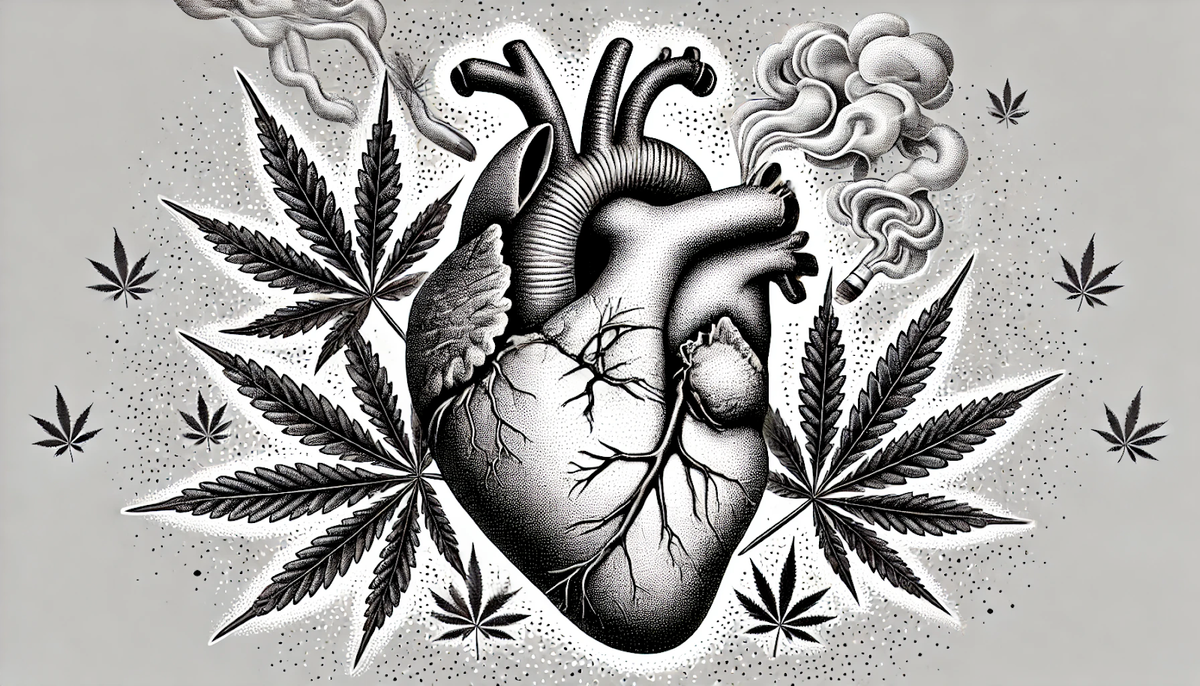Daily Weed, Higher Risks: 2025 Insights on Cannabis and Cardiovascular Health

Rising Marijuana Use and Research Focus
Marijuana, or cannabis, has seen increased legalization and usage, particularly in the United States, with recreational and medicinal use expanding in recent years. This rise has prompted researchers to investigate its health effects, especially on the cardiovascular system, given the known impacts of THC (tetrahydrocannabinol) on heart rate and blood pressure. Studies from 2024 and early 2025 have consistently highlighted associations between marijuana use and increased risks of heart attacks (myocardial infarction) and strokes, prompting a deeper look into frequency, methods of consumption, and vulnerable populations.
Findings from 2024 Studies
In 2024, several studies provided significant insights into the cardiovascular risks of marijuana use. A key study published in the Journal of the American Heart Association by Jeffers et al. (2024) analyzed data from the Behavioral Risk Factor Surveillance Survey (2016–2020), involving 434,104 adults aged 18–74 from 27 U.S. states and two territories (Association of Cannabis Use With Cardiovascular Outcomes Among US Adults). The findings included:
- General Population Risks: Daily marijuana use was associated with a 25% higher risk of heart attack and a 42% higher risk of stroke, independent of tobacco use or other cardiovascular risk factors.
- Non-Tobacco Smokers: Among those who never smoked tobacco, daily use was linked to a 49% higher risk of heart attack and more than double the risk of stroke (over 100% increase), highlighting a significant relative risk for this subgroup.
- Occasional Use: Even use as little as once per month was associated with some increased risk, though less than daily use, with specific odds ratios showing a dose-response relationship (e.g., 3% increased risk for heart attack with less frequent use).
- Methods of Consumption: The study noted that smoking was the most common method (about three-quarters of users), followed by eating and vaporizing, but all methods were associated with risks, suggesting that the impact is not limited to inhalation.
Other 2024 studies, such as those reported by CNN and The New York Times, corroborated these findings, emphasizing that any use, including among older adults, could raise risks, with daily users being 34% more likely to develop heart failure in some analyses (Any use of marijuana linked to higher risk of heart attack and stroke, study says).
2025 Research: New Evidence and Continuity
Early 2025 brought further developments with a study published on March 18, 2025, in JACC: Advances by Kamel et al., titled "Myocardial Infarction and Cardiovascular Risks Associated with Cannabis Use: A Multicenter Retrospective Study" (Myocardial Infarction and Cardiovascular Risks Associated with Cannabis Use: A Multicenter Retrospective Study). This study, based on a multicenter retrospective design, found that cannabis use is associated with an increased risk of heart attack and other cardiovascular events, with risks escalating with more frequent use. While specific risk percentages were not detailed in the summary, the study aligns with 2024 findings, reinforcing the association.
Additionally, a meta-analysis by Kamel et al., scheduled for presentation at the American College of Cardiology’s Annual Scientific Session on March 29, 2025, is expected to pool data from multiple studies to confirm these risks, though full results were not available as of March 20, 2025. The SciTechDaily article reporting on these studies noted that both were limited by their retrospective nature, calling for additional prospective studies to confirm findings and identify high-risk groups (New Research Uncovers Alarming Heart Risks for Marijuana Users).
The 2025 research also referenced a previous study from 2023 presented at the American College of Cardiology, which found daily marijuana use associated with increased risk of coronary artery disease, providing historical context for the current findings.
Methodological Considerations and Limitations
Both 2024 and 2025 studies are observational, primarily retrospective, and rely on self-reported data, which can introduce bias. The 2024 study used the Behavioral Risk Factor Surveillance Survey, a large cross-sectional dataset, but lacked detailed information on dosage and long-term exposure. The 2025 study, while multicenter, also faced limitations in pooling data, as noted in the SciTechDaily article, suggesting that prospective studies are needed to establish causality. The dose-response relationship observed (higher risks with more frequent use) is a strength, but the lack of causal proof means these are associations, not definitive links.
Public Health Implications and Vulnerable Populations
The consistent findings have significant implications for public health, especially as marijuana use rises among older adults (a 2020 study noted a twofold increase among seniors over 65 between 2015 and 2018, per CNN). Key vulnerable groups include:
- Daily Users: Face the highest risks, with a clear correlation between frequency and risk.
- Non-Tobacco Smokers: Show higher relative risks, possibly due to lack of additional tobacco-related cardiovascular strain.
- Older Adults: At greater risk due to age-related cardiovascular factors, with studies showing increased hospitalization rates for heart attacks and strokes among marijuana-using seniors.
Healthcare providers are advised to routinely ask about marijuana use during exams, similar to tobacco, to better assess cardiovascular risk, as suggested by the National Institutes of Health in 2024 reports (Smoking cannabis associated with increased risk of heart attack, stroke).
Potential Mechanisms and Future Research
Researchers hypothesize that THC increases heart rate and blood pressure, potentially straining the cardiovascular system, while smoking introduces harmful chemicals similar to tobacco. However, the impact of edibles and vaping suggests that systemic effects of cannabis compounds may also play a role. Future research should focus on prospective studies to establish causality, long-term effects, and differential risks by method of consumption and demographic factors. The American Heart Association has advised refraining from smoking or vaping any substance, including cannabis, due to potential harm to heart, lungs, and blood vessels (Cannabis use linked to increase in heart attack and stroke risk).
Comparative Analysis: Risk Levels by Frequency and Population
To illustrate the risks, here’s a table summarizing key findings from 2024 and 2025 studies:
This table highlights the dose-response relationship and the heightened risks for non-tobacco smokers, an unexpected detail given the focus on smoking-related risks.
Why the Relative Risk Looks Different
The key here is the baseline risk—the starting point before marijuana’s effects are added:
- Tobacco Smokers in the General Population: These individuals already have an elevated risk of heart attacks and strokes due to tobacco’s harmful effects (e.g., damaged blood vessels, increased clotting). Let’s say their baseline risk is 20% (hypothetical). A 25% relative increase from marijuana might take it to 25%. The absolute increase (5%) is still significant, but the relative jump looks smaller because the starting point was higher.
- Non-Tobacco Smokers: These individuals have a lower baseline risk since they avoid tobacco (e.g., maybe 10%). A 49% relative increase from marijuana takes it to 14.9%. The relative increase (49%) looks bigger because the starting point was lower, even though the absolute increase (4.9%) is similar to the tobacco group.
Conclusion and Call for Awareness
In conclusion, as of March 20, 2025, recent developments in research continue to show that marijuana use is associated with increased risks of heart attacks and strokes, with 2025 studies building on 2024 evidence. Daily users and non-tobacco smokers face the highest risks, and even occasional use carries some concern. While these findings are not causal, they suggest a need for caution, especially for vulnerable populations like older adults. As legalization progresses, public health efforts must balance these risks with potential benefits, and further research is essential to guide policy and individual choices.
Key Citations
- Association of Cannabis Use With Cardiovascular Outcomes Among US Adults
- Myocardial Infarction and Cardiovascular Risks Associated with Cannabis Use: A Multicenter Retrospective Study
- New Research Uncovers Alarming Heart Risks for Marijuana Users
- Any use of marijuana linked to higher risk of heart attack and stroke, study says
- Smoking cannabis associated with increased risk of heart attack, stroke
- Cannabis use linked to increase in heart attack and stroke risk




Comments ()